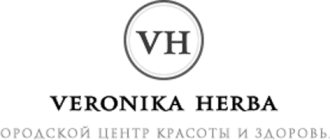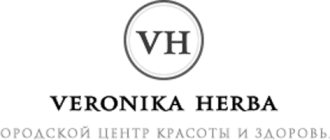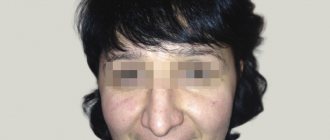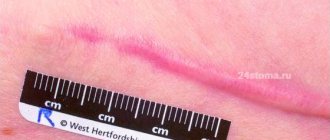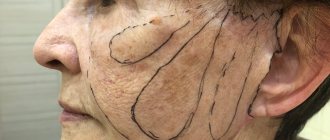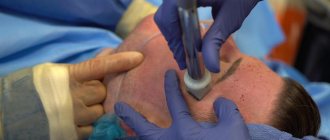From this article you will learn:
- What are Aptos threads for face lifting?
- What types of Aptos threads exist?
- Who is recommended for a facelift with Aptos threads?
- What are the contraindications to the procedure?
- How does the facelift procedure work?
- What complications can there be after the procedure?
- What are the features of the rehabilitation period after the procedure?
Every woman sooner or later begins to think about preserving her youthful appearance. The aging process, unfortunately, is an inevitable and irreversible phenomenon. The first wrinkles and decreased elasticity of facial skin are alarm bells that women notice already at the age of 30–35.
Only a few are in a hurry to undergo plastic surgery, and surgeons are not eager to offer anti-aging surgeries to young patients. Modern advances in cosmetology come to the rescue. Among them are Aptos threads for face lifting. The thinnest threads are inserted under the skin, creating a frame for the existing soft tissues. The effect lasts from two to six years. In our article we will understand the nuances of the material used and the procedure.
What are Aptos threads for face lifting?
Aptos are special surgical threads that can be installed in different layers of facial skin to restore its former elasticity and contours.
This is a patented product developed in 1996 by plastic surgeon, candidate of medical sciences M. A. Sulamanidze.
A facelift with Aptos is a low-traumatic procedure and allows you to combat age-related skin changes without surgical intervention. They are introduced under the skin through micropunctures, of which no trace will remain, they get along well in the tissues of human skin and allow you to achieve amazing results.
The term “ptosis” in medicine means “drooping, sagging,” and the prefix “a-” is interpreted as a negation, that is, Aptos is “against sagging.”
Types of Aptos threads for face lifting (the most basic):
- Artos Needle 4/0 is a double-edged needle with a non-absorbable polypropylene thread. It interacts well with the skin and allows correction of the cheek-zygomatic area and chin without surgical incisions. The effect lasts up to five years.
- Artos Needle 3/0, 2/0 is a double-edged needle with a non-absorbable polypropylene smooth thread without the need for puncturing along complex trajectories. It is used to correct the double chin, submandibular area and lower jaw contour.
- Artos Needle 2G is a double-edged, thinnest needle with caprolac thread. The composition contains polylactic acid, which, as it dissolves, is released and enters the body, starting the process of formation of new collagen in the facial skin. With its help, they tighten and add volume to the cheek-zygomatic area and eyebrow area.
- Artos Wire – scalpel (wire). Used to correct pronounced facial problems. For example, to eliminate deep eyebrow wrinkles, nasolabial folds and skin defects.
- Artos Thread is a polypropylene thread with multidirectional notches, fixed on paired needles. The originality of double needles lies in the fact that they are fastened to each other with a temporary connection, due to which they have one common point. This allows you to insert both needles through one puncture of the skin, and then separate and create the desired contour. Correction areas are the eyebrow area, cheek-zygomatic area, mental and submental areas.
New items:
- Aptos Excellence (Body, Contour, Visage, Elegance) is a revolutionary technique that is a face and body lift with Aptos threads. The material used is caprolac, which is completely absorbable and is removed without residue after 360 days. The threads contain L-lactic acid, which provides an additional rejuvenating effect. In the process of creating Excellence, national types of appearance were taken into account, since each nation has its own characteristics of age-related changes in the face.
- Artos Nano (Spring, Vitis) - self-absorbing threads made in the form of a thin spring. Ideal for installation in moving areas of the face - lips, nasolabial folds.
Age recommendations:
- At the age of 25–35, it is recommended to use absorbable Aptos threads with a slight tightening effect, which will prevent the sagging of the tissues, slightly lift them and rejuvenate the contours and skin of the face.
- At 35–45 years old, the best option would be a lift using a combination of two types of Aptos threads: polylactic and polypropylene.
- After 50 years, non-absorbable threads are used to maintain the oval contour of the face.
Read material on the topic: Modeling the oval of the face: methods, possible effects, advantages of the procedure
Thread lifting
Thread lifting – 1
The chin area is one of the first to start to worry about in terms of age-related changes. Often this is what is called a “double” chin, i.e. excess subcutaneous fat, or maybe it is sagging and sagging skin in the submental area, which is visible both at rest and even more so when moving.
In this case, thread lifting (reinforcement + lifting) was performed on the submental area and oval of the face. The patient is not an ideal candidate for the “thread” procedure, because There are already significant tissue changes. But since she was not ready for the operation, it was decided to put in threads with preparation. The procedure was carried out under local anesthesia and took about an hour. Full recovery - 2 weeks. Preliminary preparation was carried out - lipolytics on the chin area. 3 procedures and botulinum toxin injections on the neck area. The result in the photo after 1 month.
The patient was additionally recommended laser neck rejuvenation to improve skin tone. Also, after a year, it is recommended to repeat the thread lifting procedure on the same area in order to strengthen the frame and enhance the effect.
Cosmetologist's work:
- reinforcement + lifting
- local anesthesia
- result after 1 month
- botulinum toxin injections
- continue after 1 year
- preparation with lipolytics
Thread lifting – 2
A floating oval of the face, which appears more and more every year, is the most common complaint about consultations with a cosmetologist. If you want to put your palms on your cheeks and lift the tissues with your hands, then most often this is a direct indication for thread lifting. Of course, the degree of ptosis (sagging) varies from person to person, but in most cases the threads will provide a good natural tightening effect.
In this case, not only lifting threads were supplied, but also reinforcing threads. This was done in order to strengthen the fabrics, reduce their area, and mutually strengthen the work of all threads. The procedure was performed under local anesthesia and was comfortable for the patient. It was necessary to comply with the conditions of rehabilitation - restrictions on facial expressions in the first days, sports, baths and alcohol, a bandage at night on the oval of the face. The result was assessed after 3 weeks. The face regained its former youthful and toned appearance.
Cosmetologist's work:
- lifting threads
- local anesthesia
- result after 3 weeks
- reinforcing threads
- Youthful appearance
- toned face
Thread lifting – 3
Cosmetologist's work:
I will describe the MYTHS that I encounter in my work:
All threads provide lifting
This is absolutely not true!
There are a huge number of types of threads. There are LIFTING and REINFORCING threads.
Lifting threads
The first ones always give lifting, this is their main purpose. They have a fixation point in front of the ear, behind the ear, on the cheekbone area, for example. The specialist almost always creates the effect of hypercorrection (excessively tightened skin, sometimes to the point of folds). Hypercorrection usually lasts from 2 days to 2-3 weeks, then goes away on its own. We evaluate the effect of these threads in a month, not earlier.
Reinforcing threads
The task of reinforcing threads is completely different - to improve the condition of the skin, thicken it, create a kind of frame due to the collagen with which the threads “overgrow”. They can give a slight lifting effect and a feeling of tightness, but this goes away fairly quickly. These include most mesothreads.
Threads are done instead of surgery, you have to wait until the last minute and then decide on them.
Not true!
It is necessary to make reinforcing versions of threads to prevent drooping and sagging of facial tissues, from the age of 30 years, for “heavy” faces and earlier. For lifting threads, the indication is a slight excess of tissue above the nasolabial area or in the oval area of the face, for example. But even in this case, the principle “better sooner than later” applies.
Lifting threads are a 100% guarantee of effect
Not true!
The threads look like fishing line with notches. The degree of tissue fixation with these notches, in addition to the characteristics of the thread itself, is influenced by several factors - the severity of the tissues, their looseness or, on the contrary, density, installation technique, compliance with the doctor’s recommendations after the procedure, etc. Based on this, it is clear that, as with any other medical procedure, , including even surgery, there is a risk of insufficient effect. Tip of the day: before you sit for a year and think about getting threads or not, go for a consultation first. There may be nothing to think about if surgery is already indicated.
Threads contribute to the formation of scars in the skin!
This is one of the main misconceptions.
It is often put into the heads of patients by cosmetologists themselves who do not work with this technique, or by facial gymnastics trainers.
Fact - a collagen sheath actually forms around the thread, just like around filler and any other foreign agent. There are threads, after resorption of which this collagen remains, and there are those after which it is not. The doctor chooses the option at his own discretion, based on the data of each individual patient. The sheath that our body forms around the thread is there temporarily and is gradually destroyed after the thread itself is absorbed. It does not affect health.
Threads are a panacea!
Many patients believe that if they decide to use threads, then with these very threads the specialist should solve at least ALL problems on the face
This is certainly not true!
The fact is that often before applying threads (especially lifting ones) to a particular area, it is necessary to prepare the face using other methods in order, firstly, to give the threads a chance for maximum effect, and secondly, so that the face looks harmonious after the correction is completed (there was no “tightness”, imbalance in areas of the face).
In most cases, it is necessary to first work with the quality of the fabrics, which must be moved to their rightful place. Here, hardware techniques and reinforcing threads most often help. Working with excessive facial activity is also often included in the preparation plan, because there is no point in pulling tissues upward when the muscles of the neck and chin are in constant tension and pulling these same tissues down.
There is no point in checking which is stronger, the thread or the muscle; it is obvious that the thread is the loser here. So if a specialist talks about a preparation option, and it seems logical to you, then perhaps you should listen. The chances of a good effect will be many times greater.
If you insert threads, the operation will not be possible in the future.
It is a myth! Misconception.
As one very respected plastic surgeon said (and his opinion is supported by many colleagues), “neither threads nor fillers in the tissues will interfere with any surgeon whose arms grow out of place.” In extreme cases, the surgeon will remove the thread.
Very often, threads are perceived as the only effective procedure.
in terms of visual rejuvenation of older people. “I’m 55 years old, now probably only threads will be effective?”
This is wrong!
Moreover, two extremes are quite possible here. Or you can do without lifting threads, because the condition of the tissue allows you to achieve excellent results using hardware and injection techniques. Or surgery is necessary for the desired result. Conclusion - threads are placed according to clear indications, which are revealed during a live examination, and not based on age.
Threads have no effect!
Cosmetologist Yuliana ShiyanComment from cosmetologist, dermatologist Yuliana Shiyan:
And another one of those misconceptions, after which everyone around writes that threads do not give effect. It’s called “I need these threads, two little things, please wrap them!”
The patient himself never chooses the material, chooses the technique, and even less chooses the volume of correction. In practice, everything works out in such a way that there is an amount that needs to be met, the burning eyes of a patient who has been choosing threads on the forum based on reviews for six months, and a cosmetologist who takes and does the procedure, despite many BUTs. As a result, the face quickly slides down again, to no avail.
But the reality is that thoughtful preparation was needed for at least 2 months and the volume of threads was 3-4 times larger than what the patient imagined. Why is that? Yes, because two threads cannot hold what only 6-8 can hold. This is not the harm of a cosmetologist or surgeon, this is physics, you can’t argue against it. So if you want to get by with the minimum on all counts, don’t delay. If you don't like the oval, go for a consultation right away.
Let's figure out why facial tissues droop and why massage is not helpful here.
Our face is a multi-layered structure; anatomists compare the structure to a layer cake. And these are not gastronomic delights, but a clear understanding of how our tissues are located, change with age and move relative to each other.
Starting from the first layer of bone tissue, we move upward, followed by muscles with ligaments, subcutaneous fat, and the skin itself. Over the years, bones decrease in volume and change position slightly; teeth are often lost and not restored.
The ligaments of the face will weaken, and as a result, the fat packets, which were once pretty girlish cheeks, begin to “slide” down, because no one has canceled gravity.
The skin loses collagen and elastin fibers, resists facial expressions less, and its tone is reduced. As a result, creases and wrinkles form. The number of connections between all these layers decreases, the tissues become very mobile.
When we look at this whole “pie” and the changes taking place in it, it becomes obvious that working with the face cannot be limited to just affecting the skin. Skin folds and furrows are just a visible consequence of deeper changes in all tissues. To influence each layer of our face, cosmetology has its own techniques. But, before you go to a cosmetologist, take a look at the before and after photos of thread lifting
Real lifting is provided by single methods! And the favorite among them is Thread lifting.
Lifting threads
The threads can be different in shape (spirals, springs, linear), in the location of the uncuts, in composition (polylactic acid, polydioxanone, polypropylene), and in effect. To think that every thread and every procedure with threads gives the desired lifting is not entirely true.
Reinforcing threads
Such threads are needed if the tissues have just begun to sag or if, on the contrary, they are already too mobile and without preparation they will simply “fly off” from the notches of the lifting threads. The task of reinforcing threads is to thicken tissues, improve their quality, create a certain frame, and bring the number of collagen fibers closer to young ones. After such preliminary preparation, the lifting threads will hold their position well and give an effect for a long time.
Reinforcing threads provide a little lifting as well, but it is usually noticeable only on young faces without pronounced ptosis (tissue drooping). They can serve as good prevention if delivered in a timely manner, at the very initial stages of ptosis.
Lifting threads
Their task is to return the face to its rightful place. They have notches and are laid in such a way as to move the tissue to a more elevated position that is beneficial to us. The thread attachment points on the face and the notches allow you to maintain this same lifting for a certain period - from several months to 1.5-2 years if the threads are absorbable, and up to 5-7 years if they are non-absorbable.
Areas where thread lifting is most often used:
- Forehead (eyebrow lift)
- Cheek-zygomatic region
- Face oval
- Mental area - elimination of the double chin and sagging cervical-mental angle
- Neck, décolleté, shoulders, abdomen, hips (usually reinforcement to strengthen and improve tissue tone in these areas)
Procedure
The thread lifting procedure is carried out using sterile instruments in a medical office. The correction area is anesthetized and the procedure itself is comfortable for the patient. It is important to remember that the procedure requires rehabilitation from 3 days to 3 weeks. The timing depends on the amount of correction and the individual tissue reaction. The result is assessed after 4-5 weeks.
Indications and contraindications for the use of Aptos threads for face lifting
Facelift with Aptos threads is recommended for the following reasons:
- Initial or moderate manifestations of age-related changes in the soft tissues of the face.
- Drooping eyelids and eyebrows.
- Flabbiness and uneven skin texture.
- Folds in various areas of the face, creases and deep wrinkles.
- Oval deformation, appearance of a double chin.
- Omission and deformation of the soft tissues of the face.
Contraindications:
- The presence of pronounced excess skin on the face.
- The tendency of the dermis to form keloid scars.
- Increased body temperature, sharp decrease in immunity, colds, viral infection.
- Diseases of the circulatory system.
- Oncology.
- Acute inflammatory diseases of the oral cavity and ENT organs.
- HIV infection, viral hepatitis.
- Autoimmune diseases and pathologies of the central nervous system, mental disorders.
- Diabetes.
- First week of the menstrual cycle.
- Pregnancy of any trimester and breastfeeding period.
- Individual intolerance to injected substances, as well as drugs used for local anesthesia.
- The presence of permanent threads or other implants in the intervention area.
Read material on the topic: Facial muscle lift as a modern way of rejuvenation
Main differences
Age restrictions. Despite the fact that all people age differently, the general trends in thread lifting are as follows. For those aged 30 to 40, it is recommended to use absorbable sutures. But after 40, non-absorbable ones are more effective. Kogi are presented only in a biodegradable version, while Aptos have a wider range, and therefore are more convenient to use.
Seams and cuts. Usually, if the volume of correction is small, the doctor uses special needles or cannulas to insert threads. After the procedure, from 2 to 6 microholes remain on the patient’s body. Within half an hour they tighten and become indistinguishable on the skin. If the correction is serious, then micro-incisions are made to implant the threads. After the procedure, the doctor applies a cosmetic suture and removes it a few days later.
Lifting of congenital or acquired asymmetry, severe age-related changes in the face, as well as other complex cases, can only be done with non-absorbable Aptos threads. Kogi is not applicable for this. So the desire to get rid of a more serious defect entails not only more time, but also more discomfort during the rehabilitation period.
How does the facelift procedure with Aptos threads work?
The procedure for lifting with Aptos threads takes from 10–30 minutes to 1.5–2.5 hours, depending on the area of treatment and the number of zones to be corrected, and begins with treating the skin with an antiseptic solution.
Then marks are made of places for introducing threads and guide lines are drawn. Anesthesia is performed.
Through micropunctures into the subcutaneous layer, the surgeon inserts cannulas - blunt needles with attached suture surgical material. The Aptos thread remains inside the facial skin tissues. It is only pulled to the desired level at both ends, and the excess is cut off.
The Aptos material has notches that, when opened, create a frame. The body subsequently builds up additional collagen fibers on it, which thicken the skin.
Recommended articles on the topic:
- Facial mesotherapy procedure: pros and cons
- Beauty injections: types of drugs, reviews
- Placental therapy is the secret of eternal youth
Related procedures
Along with the introduction of mesothreads and Aptos, it is recommended to carry out other cosmetic procedures to ensure a comprehensive effect. Radiofrequency lifting, biorevitalization, mesotherapy, and botulinum therapy go well with thread correction.
How much does a facelift with Aptos threads cost?
The price of Aptos threads for a facelift depends on the material they are made of, and the cost of the procedure itself depends on the equipment, the country in which the manipulation will be performed, the clinic and its policies, as well as the experience of the surgeon, his titles and awards. Some centers may tell you the cost of completely treating the area, while others may quote the price for one Aptos thread.
The amounts given below are approximate, but will help you get your bearings at least a little:
- local areas of the face (around the lips, eyebrows, etc.) – 10,000–14,000 rubles or more;
- third of the face (upper, middle or lower) – 45,000–52,000 rubles;
- full face – 100,000–120,000 rubles or more;
- neck – 105,000–140,000 rubles;
- one Aptos thread - from 1500 to 3200 rubles, depending on the structure.
How much does the procedure cost?
The price for the procedure for introducing mesothreads and Aptos threads consists of a number of factors. These include the level of the specialist, the type of threads and the amount of material used, the correction area and other components. The doctors of our center will calculate the specific amount for you during the consultation.
Discover the possibilities for the most youthful and toned face, neck, and décolleté. Call the phone number listed on the website, or fill out an online application and schedule a consultation with our specialists.
If mesothreads or Aptos threads, then definitely go to GMTClinic!
Rehabilitation after facelift with Aptos threads
Aptos threads for skin tightening rarely cause complications, and rehabilitation is divided into three periods:
- Acute (3–5 days).
- Early (up to two weeks).
- Late (two to four weeks).
At this time, fixing patches remain on the face, so you should maintain a particularly gentle regime. It is necessary to sleep only on your back, do not drink hot drinks or food, do not support your head with your hands, do not touch the skin, do not open your mouth wide, and chew without sudden movements. During this period, it is prohibited to take a hot shower, visit the steam room, sauna, swimming pool, or fitness club. On the first day, the tightening area is cooled with ice, and the punctures are disinfected with hydrogen peroxide several times a day. Later, decongestant ointments are used, for example, heparin, lyoton, troxevasin. They help well with the appearance of hematomas.
If there is pain at this stage, painkillers are prescribed (analgin, pentalgin, ketanov).
During this period, the retaining patches are removed and the folds begin to gradually straighten out. It should be noted that depending on skin types and face shape, as well as the severity of age-related changes, the process occurs at different speeds. It is necessary to continue to observe the restrictions of the acute period, with the exception of temperature ones (you can wash in a hot shower). You can perform procedures aimed at speedy rehabilitation: microcurrents, phono- and iontophoresis, ultrasound. It is recommended to use special cosmetics based on hyaluronic acid. The products are applied strictly along the lines indicated by the attending physician.
During this period, the face looks almost normal. Minor retractions and folds are practically invisible and can be easily masked with simple decorative cosmetics. At this stage, it is necessary to continue the rehabilitation measures begun in the previous step. This will allow you to consolidate the results achieved. Lifestyle restrictions are lifted, but the correction zone should be treated with care.
At the end of the late rehabilitation period, it is recommended to visit a doctor who, if necessary, will correct residual skin defects.
For a speedy recovery:
- For the first two days, apply cold or APTOS Icepack to the tightening area 3-4 times a day for 15 minutes.
- If pain persists, take painkillers.
- Use decongestants.
- Refrain from drinking hot drinks and food for two to three days.
- During the first three days, treat punctures with antiseptic solutions.
- During the first two to three weeks, any physical activity is prohibited, and it is also recommended to limit facial activity.
- For two months, stop drinking alcohol, physiotherapeutic procedures, massage and myostimulation.
- Avoid flying.
- Sleep only on your back.
- Visit your doctor on the seventh and fourteenth days after the procedure.
Read material on the topic: Mesothreads for facelift: pros and cons of the procedure
Kogi threads
Kogi are threads with special notches and notches that are directed in one direction. After inserting the thread, the doctor tightens it so that the notches are straightened and secured in the tissue.
Kogi implants are made from bioabsorbable fiber . They dissolve within a year and a half, leaving behind a movable framework of fibrous tissue.
Frequently asked questions about the Aptos thread lift procedure
Aptos threads for face lifting receive mostly positive reviews. Below we provide answers to the main questions that interest potential clients.
- How painful will the procedure be?
A facelift with Aptos threads is considered a relatively painless procedure, but is performed using local anesthesia for the patient’s comfort. Such anesthesia involves the introduction of an anesthetic solution, for example, ultracaine, into the puncture area and along the contour of the Aptos threads. Implantation does not cause pain. Only the administration of anesthesia can cause slight discomfort.
- Does the procedure require preliminary preparation?
Before the procedure, it is recommended to avoid using antiplatelet agents (acetylsalicylic acid, aspirin, dipyridamole, pentoxifylline, xanthinolanicotinate, etc.) and dietary supplements that can affect blood clotting. Two hours before your facelift, you should refrain from eating and drinking large amounts of water.
- What complications can occur after the procedure?
Manipulation with Aptos threads is low-traumatic, but despite this, some complications are possible, which the doctor can easily eliminate. After a facelift, hematomas, swelling, subcutaneous hemorrhages, unevenness, slight retractions, and asymmetry are possible in this way. Such manifestations do not require correction and disappear within a few weeks, in rare cases they can last up to two months. If the doctor's recommendations are not followed, the threads may break or weaken. In this case, correction will be required.
- What are Aptos threads made of? Is this material safe?
There are two types of Aptos threads: non-absorbable and absorbable. The first ones are made from polypropylene - a synthetic suture material. It is safe, does not cause allergies and is not rejected by the body. The latter are made from a copolymer of L-lactide and caprolac. They contain L-lactic acid, which produces an additional rejuvenating effect by stimulating the natural process of skin cell renewal. L-lactic acid is released until the threads are completely dissolved, due to which the result of the tightening only improves over time.
- How long does the rehabilitation period last?
Full recovery after an Aptos lift occurs in approximately one to two weeks, depending on the characteristics of the body. Sometimes this period can last up to three to four weeks.
To consolidate the positive result and reduce rehabilitation time, the following may additionally be prescribed:
- Plasmolifting – applied in a course before, during and after the procedure.
- Microcurrent therapy, which is carried out throughout the entire recovery period.
- Hardware and injection cosmetology – in 2-3 weeks.
- How soon can you see the effect and how long does it last?
You will notice the result immediately after the procedure, it becomes more noticeable by the end of the second week. The duration of the effect depends on the correction area, the type of Aptos threads, the individual characteristics of the patient, his lifestyle and compliance with recommendations during the rehabilitation period. When using absorbable threads, it lasts up to two to three years, non-absorbable threads - up to five years. The lift can be repeated no earlier than after two months. The number of procedures is determined by the attending physician individually.
Read material on the topic: Plasmolifting of the face - a breakthrough in domestic cosmetology
Complaint #3 - real complications
Such problems are fortunately rare. They are usually associated with the doctor’s reluctance or inability to remove the inflamed thread in a timely manner.
Prolonged inflammation around the mesothreads
Before inserting threads, check with your doctor to see if he can remove them in case of problems
With Aptos it’s easier in this regard - even novice doctors are required to be trained there to remove threads. But there are difficulties with numerous Korean mesothreads. Especially if the city is small, and a novice cosmetologist simply does not have experienced colleagues nearby to turn to.
Possible consequences after the procedure of implantation of Aptos threads
Possible consequences after a facelift:
- Exposed thread. See a doctor and he will cut off the excess.
- Infection occurs when the basic rules of the procedure are not followed.
- The appearance of hematomas and swelling due to injury to muscle tissue and blood vessels on the face. They do not require special treatment and go away on their own within two weeks.
- Displacement of the thread or its breakage can only be eliminated by repeated surgical intervention.
- Violation of the smooth contour and facial lines is possible with improper tension and distribution of the material. It can only be eliminated by repeated surgery.
Aptos threads are a progressive method of face lifting, which is on the verge of plastic surgery and cosmetology, and photos of patients before and after the procedure allow you to verify the effectiveness of this method.
Nowadays, you no longer have to spend a lot of time performing complex and unpleasant procedures at home. It is much easier to seek help from real professionals - the Veronika Herba beauty and health center, equipped with effective and modern equipment.
Why clients choose Veronika Herba Beauty and Health Center:
- This is a beauty center where you can take care of yourself at a reasonable cost, while your face and/or body will be treated not by an ordinary cosmetologist, but by one of the best dermatologists in Moscow. This is a completely different, higher level of service!
- You can receive qualified help at any time convenient for you. The beauty center is open from 9:00 to 21:00, seven days a week. The main thing is to agree with your doctor in advance on the date and time of your appointment.
Sign up for a consultation with a specialist by phone +7 (495) 085-15-13
, and you will see for yourself!
Threads will not help remove stretch marks!
Patients often ask if threads are effective against stretch marks because they have met doctors who promote such treatments. Not really! Stretch marks are loss of tissue in the skin. To eliminate them, it is necessary to severely traumatize the tissue, for example, using the radiofrequency method, in order to speed up its regeneration.
Thus, inserting several threads will not do anything, because they are very thin, almost like hair. And inserting more PDO threads based on the principle of filling the volume does not pay off from a financial point of view. Each stretch requires at least 20 threads, and stretch marks on the body are not isolated.
Therefore, you need to use lifting threads where they can really help, and not as a panacea for everything that, unfortunately, begins to happen. Nothing better than RF microneedles has yet been invented to combat stretch marks.
Who is suitable for installing American threads?
- people who notice the first signs of sagging skin, nasolabial folds, contouring of the eye sockets.
- for those who want to “ennoble” rough facial lines.
- People who want to avoid facelift surgery are concerned about long recovery times and pain.
- for those who want to give their face youthful features, but get the result literally “tomorrow” in order to quickly return to everyday life.
- for everyone who is afraid of scars: the threads are installed through punctures in the skin and do not require incisions.
- anyone who wants to quickly improve their facial contour and straighten their lower jaw line, giving it the shape of an English letter V.
- for those who want to undergo surgical face lifting and maintain the achieved results for several years longer.
The advantage of “notches” on American threads
The disadvantages of serifs on regular threads are not very obvious, but they exist.
- Serifs are applied only on one side of the thread. Installed in the leather, they will be held in the fabrics only on the side on which there are serifs.
Unlike classic serifs, nicks on American threads are applied along the entire diameter of the thread. The thread looks like a bristling porcupine.
This arrangement provides phenomenal adhesion to all tissues around. In fact, the thread acts as a stopper, and the skin tightened by the surgeon will be securely fixed in the desired position.
It is the knurling pattern that allows us to guarantee you a highly durable aesthetic result for many years to come.
- Serifs applied on one side of the thread greatly reduce its diameter and increase the load on the remaining half. As a result, serrated threads are prone to breakage.
Failures not only take away the results. It’s unpleasant that to return it you have to install the threads again.
Since the nicks are applied along the entire diameter of the American threads, the thread turns out to be weakened evenly. In this case, the center of the thread (the area that is subjected to maximum loads) remains intact, unharmed and very strong.
- The notches on threads are generally thicker than the notches on other threads. Such threads trigger more powerful synthesis of new collagen. A long-term and durable frame for skin tightening is formed, the skin becomes dense and elastic.
To enhance the effect, we recommend using additional doses of collagen and elastin by performing facial mesolifting with the Japanese Sakura cocktail.

